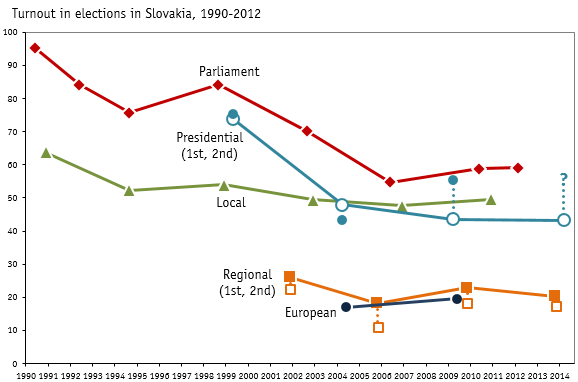Clear victory for Kiska. Not much else to say at the moment. Good analysis on STV so I turn it over to them. Tomorrow I’ll try to look at shifts in support between the two elections to give us a sense of what this means for coalition patterns.
As in the past, it seems to be the new voters, those turned off by both major “sides” who seem to hold the key. We have seen non-left/national governments only when there has been a new and quasi-independent force. Schuster in 1999, Kiska now, SDK with SDL in 1998, SDKU with ANO in 2002, SDKU with SaS in 2010. In 2012 the right was too damaged by the Gorilla scandals and infighting to take advantage of OLaNO) Whenever you have straight left against straight right without the middle, the different, the straight left/national seems to have the advantage: Smer in 2006, Gasparovic in 2010. If it had been Fico v. Prochazka would we have seen the same spread? or even the same Fico loss? Fewer voters would have turned out for the Prochazka (many Kiska voters would likely have stayed home) and more voters would have turned out for Fico, lest Prochazka win (in Fico v. Kiska election the loss wasn’t /that/ great). Would that have covered a 19 point spread? Somebody please invent a time machine or a portal to the multiverse so we can find out.
We’ll see tomorrow what the regional results look like.
Time for bed for Slovaks, but not for me. I’m off to a play put on by my school district’s amazing music program.

